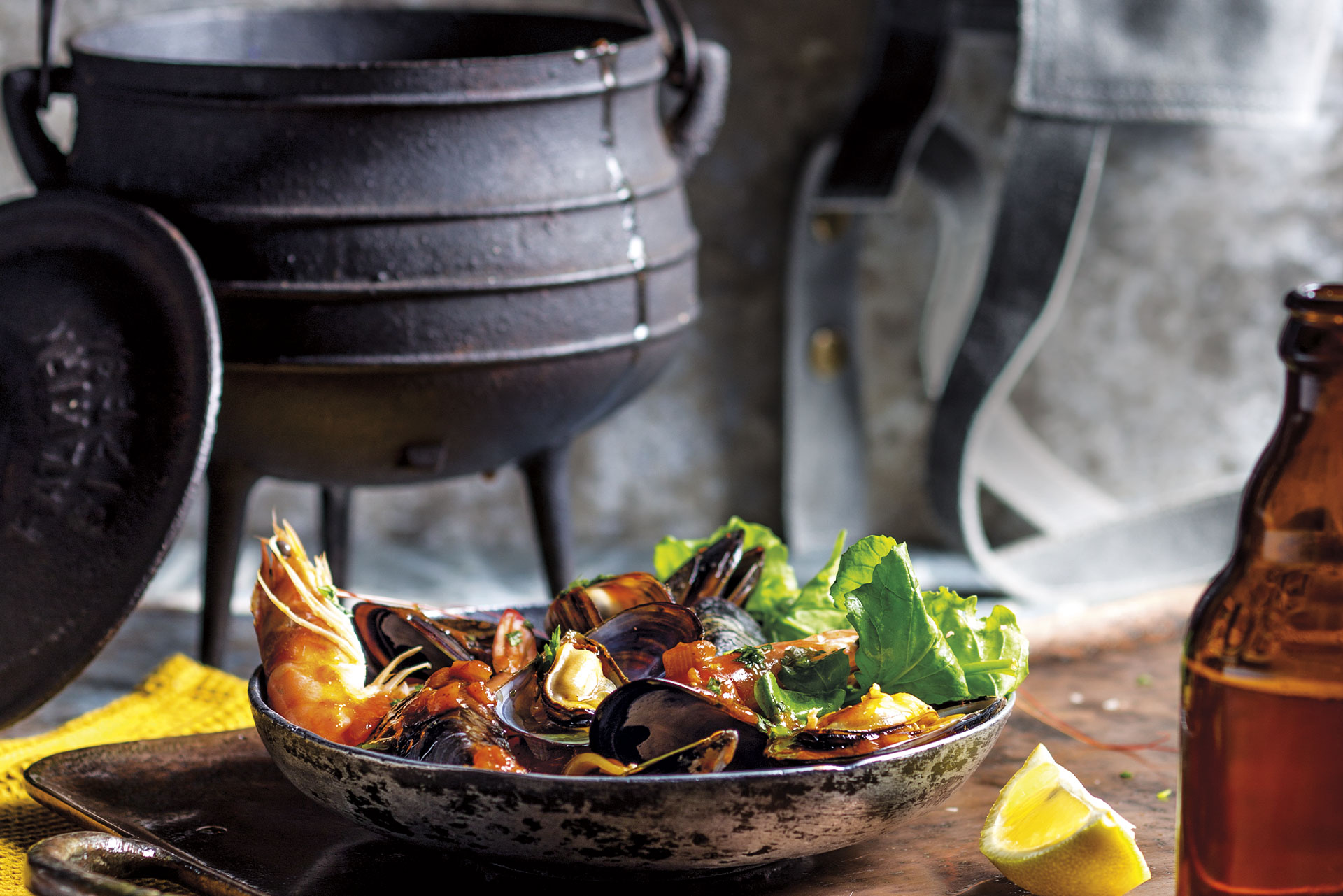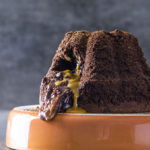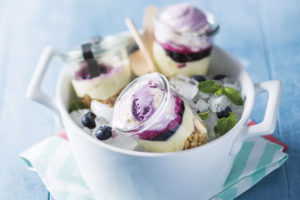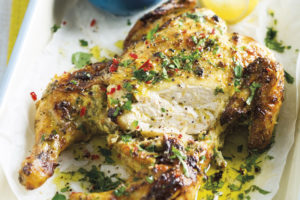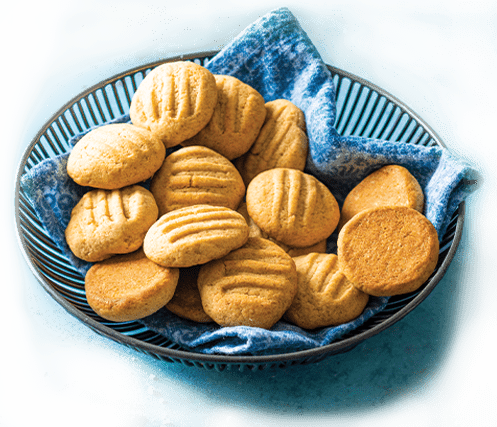Share

Black cast-iron pots burning over coals is a crucial part of our heritage. There are so many variations and people have personalised their potjies over the years, but with just these simple tips to keep in mind, we’ll have you well on your way to becoming a potjie master.

ALL ABOUT THAT IRON
Taking care of your cast iron pot is vital. Here are a few key tips on how to take care of it, storage and what to avoid. If you’re cooking in a new pot, make sure to do the following first:
- Washing up: Wash the pot with hot, soapy water and scrub clean. Leave to dry.
- Season: The term “season” refers to coating the inside of the pot with cooking oil and heating it until the oil smokes. As the fat is heated, it bonds to the metal in a process called polymerisation. During this process the fat converts into a form of plastic. After enough layers of seasoning you’ll end up with a hard, blackened skin that protects the metal from rust, ideally making the pot non-stick. Seasoning can be done over the stove or in the oven.
- Cool it down: After the seasoning process, allow the pot to cool completely before moving onto the next step.
- Give it a wipe: Wipe the inside of the pot using kitchen paper. Repeat the process until the kitchen paper comes out clean and there is no more black residue. You would need to repeat the seasoning process at least 3-4 times to set down a good initial layer.
- Storage: The best way to store your potjie is to coat the inside with a thin layer of cooking oil, as this will prevent the pot from rusting.
- Stay away: Never place a flat-bottomed cast-iron pot directly on top of coals, as this may cause food to burn. Use a tripod, or balance the pot on two bricks to create some height.
YES, SIZE DOES MATTER
Purchasing your first potjie can be quite intimidating, especially if you’re not familiar with pot sizes and how many people each pot serves. But fear not, here’s a quick guide to help you choose just the right size.

MORE TIPS FROM THE PROS
- Be sure to layer elements carefully. Allow base vegetables and aromatics to caramelise and develop in flavour before adding the rest of the ingredients. Remember that ingredients that require a longer cooking time should be added in first.
- Start off by adding very little liquid in the beginning rather than too much, as more will be created – often this is only visible at the end of cooking.
- Always add room temperature liquids or heated stocks instead of cold liquid to hot pots. The change in temperature can result in cracking.
- Avoid adding large quantities of tomatoes, vinegars, lemon juice or wine. The acidity reacts with the cast iron.
- When layering the ingredients, make sure the pot is only two-thirds full to allow room for the steam to circulate.
- Keep that lid on! Opening the pot too much during cooking will bring down the internal temperature, lengthening the cooking time and causing valuable steam to evaporate.
- When you do go in for a peek, first tilt the lid so all the collected condensation runs back into the pot before fully opening.
- Make sure to stir the potjie only just before serving. And do this gently with a wooden (not metal) spoon.
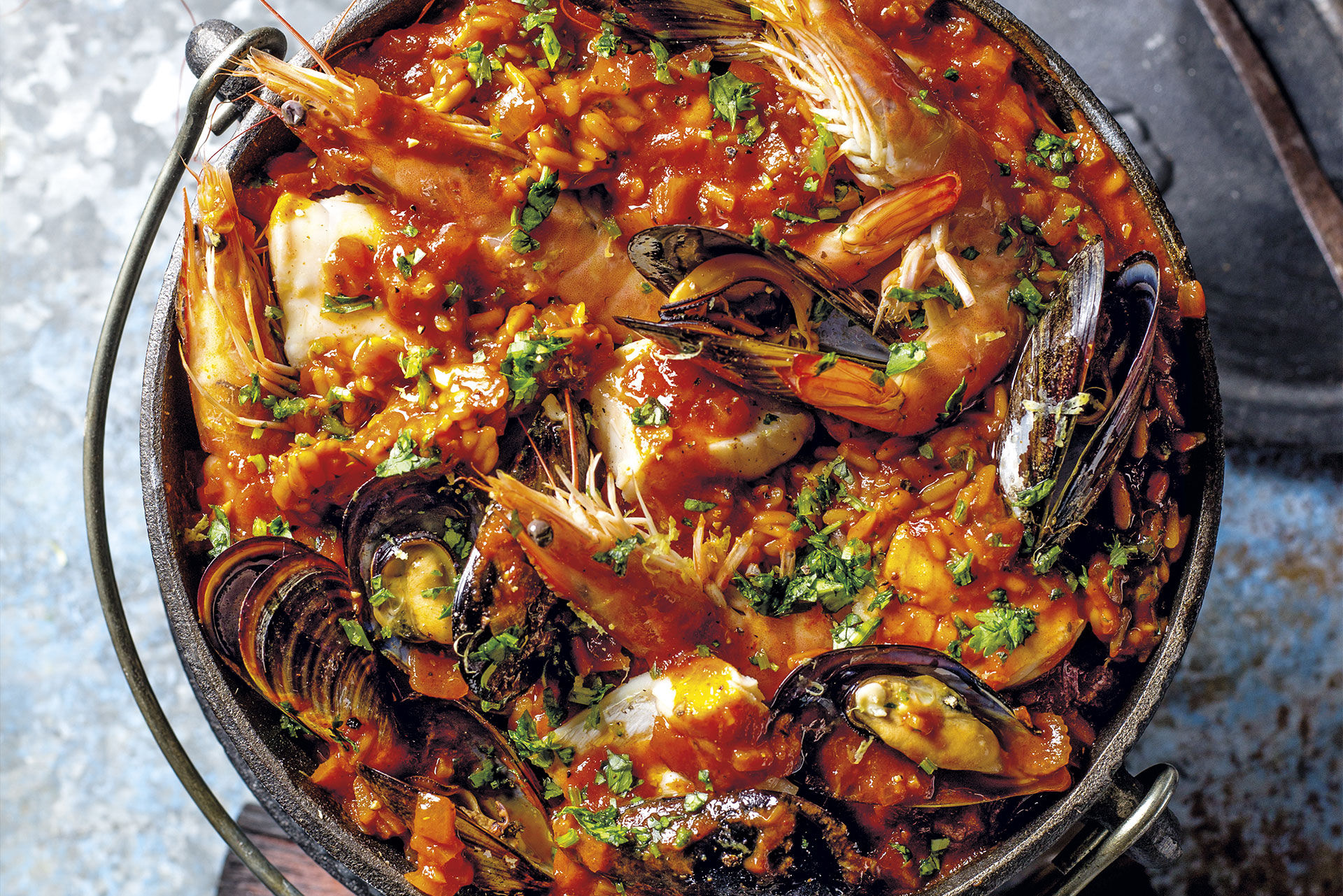
That’s all, folks! From the key ingredients that build the foundation of a potjie, tips and tricks on how to look after the mighty yet humble cast iron pot, and building and maintaining the perfect fire.

